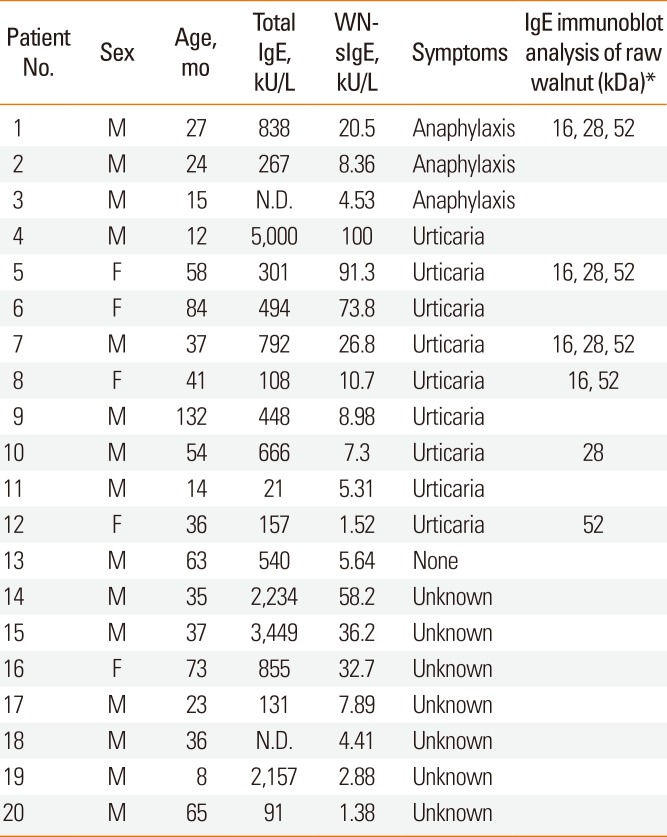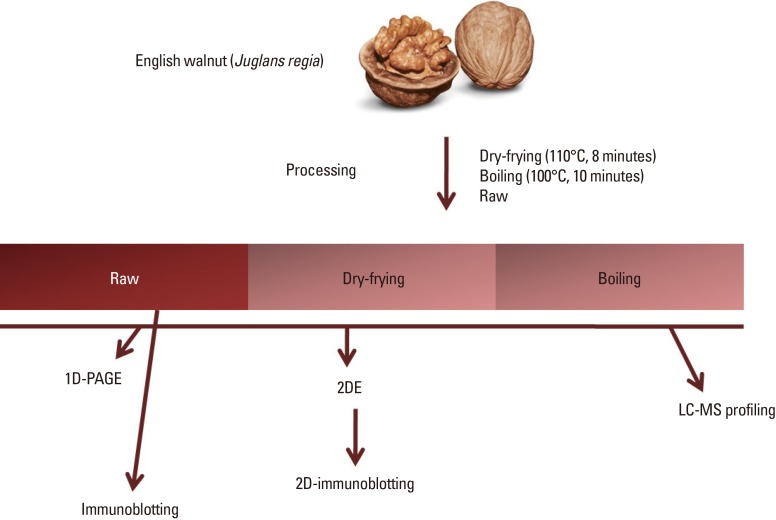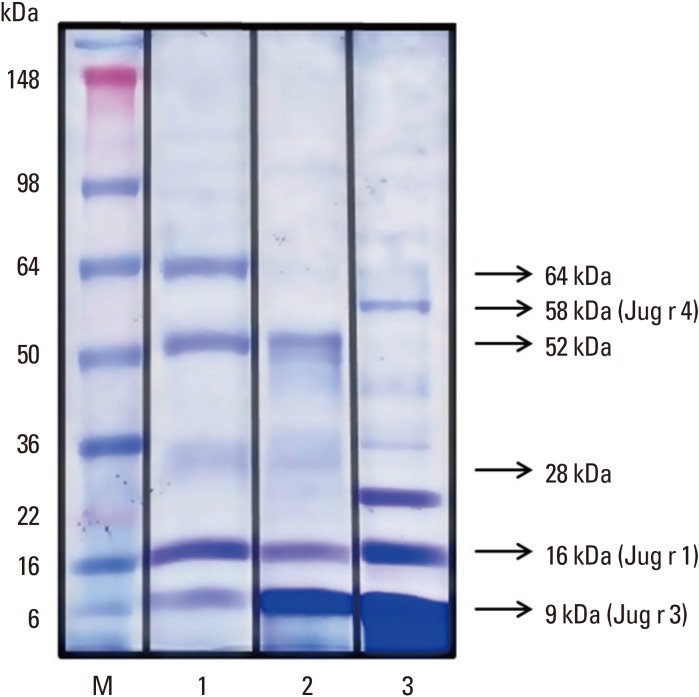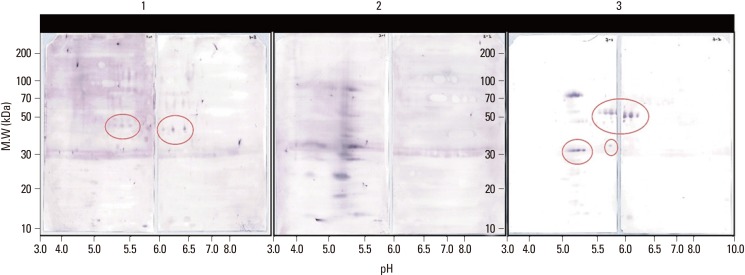1. Jeong K, Lee SY, Ahn K, Kim J, Lee HR, Suh DI, et al. A multicenter study on anaphylaxis caused by peanut, tree nuts, and seeds in children and adolescents. Allergy. 2017; 72:507–510. PMID:
27892597.

2. Lee SY, Ahn K, Kim J, Jang GC, Min TK, Yang HJ, et al. A multicenter retrospective case study of anaphylaxis triggers by age in Korean children. Allergy Asthma Immunol Res. 2016; 8:535–540. PMID:
27582405.

3. Sicherer SH, Muñoz-Furlong A, Godbold JH, Sampson HA. US prevalence of self-reported peanut, tree nut, and sesame allergy: 11-year follow-up. J Allergy Clin Immunol. 2010; 125:1322–1326. PMID:
20462634.

4. Lee CH. Global tree nut statistical review. World Agric. 2016; 186:95–110.
5. Ahn K, Kim J, Hahm MI, Lee SY, Kim WK, Chae Y, et al. Prevalence of immediate-type food allergy in Korean schoolchildren: a population-based study. Allergy Asthma Proc. 2012; 33:481–487. PMID:
23394505.

6. Kim M, Lee JY, Jeon HY, Yang HK, Lee KJ, Han Y, et al. Prevalence of immediate-type food allergy in Korean schoolchildren in 2015: a nationwide, population-based study. Allergy Asthma Immunol Res. 2017; 9:410–416. PMID:
28677354.

7. Jeong K, Kim J, Ahn K, Lee SY, Min TK, Pyun BY, et al. Age-based causes and clinical characteristics of immediate-type food allergy in Korean children. Allergy Asthma Immunol Res. 2017; 9:423–430. PMID:
28677356.

8. Pastorello EA, Farioli L, Pravettoni V, Robino AM, Scibilia J, Fortunato D, et al. Lipid transfer protein and vicilin are important walnut allergens in patients not allergic to pollen. J Allergy Clin Immunol. 2004; 114:908–914. PMID:
15480333.

9. Downs ML, Simpson A, Custovic A, Semic-Jusufagic A, Bartra J, Fernandez-Rivas M, et al. Insoluble and soluble roasted walnut proteins retain antibody reactivity. Food Chem. 2016; 194:1013–1021. PMID:
26471647.

10. Cabanillas B, Maleki SJ, Rodríguez J, Cheng H, Teuber SS, Wallowitz ML, et al. Allergenic properties and differential response of walnut subjected to processing treatments. Food Chem. 2014; 157:141–147. PMID:
24679763.

11. Su M, Venkatachalam M, Teuber SS, Roux KH, Sathe SK. Impact of γ-irradiation and thermal processing on the antigenicity of almond, cashew nut and walnut proteins. J Sci Food Agric. 2004; 84:1119–1125.
12. Park KS, Kim H, Kim NG, Cho SY, Choi KH, Seong JK, et al. Proteomic analysis and molecular characterization of tissue ferritin light chain in hepatocellular carcinoma. Hepatology. 2002; 35:1459–1466. PMID:
12029631.

13. Simons FE, Ebisawa M, Sanchez-Borges M, Thong BY, Worm M, Tanno L, et al. 2015 update of the evidence base: World Allergy Organization anaphylaxis guidelines. World Allergy Organ J. 2015; 8:32. PMID:
26525001.

14. Downs ML, Baumert JL, Taylor SL, Mills EN. Mass spectrometric analysis of allergens in roasted walnuts. J Proteomics. 2016; 142:62–69. PMID:
27150359.

15. Sordet C, Culerrier R, Granier C, Rancé F, Didier A, Barre A, et al. Expression of Jug r 1, the 2S albumin allergen from walnut (
Juglans regia), as a correctly folded and functional recombinant protein. Peptides. 2009; 30:1213–1221. PMID:
19540419.
16. Azofra J, Berroa F, Gastaminza G, Saiz N, Gamboa PM, Vela C, et al. Lipid Transfer Protein Syndrome in a non-mediterranean area. Int Arch Allergy Immunol. 2016; 169:181–188. PMID:
27144406.

17. Pascal M, Muñoz-Cano R, Reina Z, Palacín A, Vilella R, Picado C, et al. Lipid transfer protein syndrome: clinical pattern, cofactor effect and profile of molecular sensitization to plant-foods and pollens. Clin Exp Allergy. 2012; 42:1529–1539. PMID:
22994350.








 PDF
PDF ePub
ePub Citation
Citation Print
Print








 XML Download
XML Download